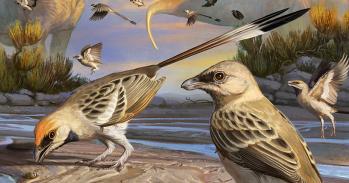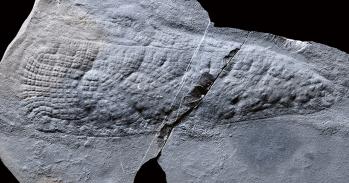
The 40-year friendship of Charles Darwin and Joseph Hooker, the most significant and scientifically important of Darwin’s life, can now be explored by anyone in the world with access to the Internet.
The 40-year friendship of Charles Darwin and Joseph Hooker, the most significant and scientifically important of Darwin’s life, can now be explored by anyone in the world with access to the Internet.
No single set of letters was more important to Darwin, or is more important now, than those exchanged with Hooker over 40 years.
Alison Pearn
Their decades of correspondence include Darwin’s most famous letter, where he first cautiously reveals not only that he thinks species change, but also that he has worked out a completely new theory as to how. Giving voice to such a theory, he admits, is like ‘confessing a murder’.
The 1,200 letters between Darwin and Hooker, 300 of which have not been published before, are being made available in more than 5,000 images by Cambridge’s Digital Library (cudl.lib.cam.ac.uk) - which launched to millions of ‘hits’ with the online publication of Isaac Newton’s archive in 2011 .
They have joined forces with the Darwin Correspondence Project (http://www.darwinproject.ac.uk/) to present the images alongside the Project's transcriptions in order to bring Darwin more vividly to life, as both a man and scientist, than ever before.
Cambridge University Library is home to the world’s largest and most important collection of Darwin’s personal papers, and hopes eventually to make far more of them available in this way.
Anne Jarvis, University Librarian, said: "Through the linking together of the Darwin Correspondence Project’s superb transcriptions of the letters with high-quality photographic reproductions from the Digital Library, online viewers of the Darwin-Hooker correspondence can now experience something of the immediacy and intimacy of this long exchange of letters, whilst still being able to easily read and search the text. And this is just the start - we are planning to release further letters and scientific manuscripts from the Darwin Papers in this way over the coming months and years."
Dr Alison Pearn of the Darwin Correspondence Project said: "No single set of letters was more important to Darwin, or is more important now, than those exchanged with Hooker over 40 years – a period that encompasses almost the entirety of Darwin’s mature working life. It is unusual for a single repository to hold both sides of any correspondence, so this is a rare opportunity to see one of the longest running and most wide-ranging conversations of the nineteenth-century unfold."
Not only did the pair discuss their sometimes differing views on a spectrum of different subjects, from science to slavery and the American Civil War, the letters between the two illuminate moments of great happiness and tragic loss in both their lives, revealing a much more personal and emotional side to Darwin the man.
It was to Hooker that Darwin sent the manuscript of On the Origin of Species and the pair also traded news and gossip – as well as revealing to one another their grief and anguish at the loss of loved ones.
Nowhere is this more heartbreakingly evident than in a previously unpublished account by Darwin of watching his daughter-in-law Amy die following childbirth. "There are very few people to whom Darwin would have written in this way" continues Pearn. "It gives us a new and unique insight into his attachment to Amy who from the earliest days of her engagement to his son, was recruited by Darwin to help him collect plant specimens and make observations.”
Elsewhere, in a letter dated June 30, 1862, Darwin relates to Hooker how much their correspondence means to him.
The letter reads:
My dear old friend,
You speak of my "warming the cockles of your heart", but you will never know how often you have warmed mine. It is not your approbation of my scientific work (though I care for that more than for any one's); it is something deeper. To this day I remember keenly a letter you wrote to me from Oxford, when I was at the water-cure, & how it cheered me, when I was utterly weary of life.
Their correspondence began in 1843 when Hooker was approached about working on Darwin's collection of plants from the Beagle voyage. Just the previous year Darwin had written out his first coherent account of the main elements of his species theory, and within a few months Hooker was admitted into the small and select group of those with whom Darwin felt able to discuss his emerging ideas. The correspondence flowed back and forth between the men until Darwin’s death in 1882.
The 300 previously unpublished letters cover the last decade of Darwin’s life and give almost day-to-day detail on the experiments that led to his books on insectivorous plants and plants that move – both crucial evidence of the relatedness of plants and animals (and humans). And also to his final and most popular book , on earthworms, published shortly before he died.
Although this is Darwin's longest-running and most detailed conversation, there are many others: the University Library collection includes letters exchanged with more than 100 other correspondents, including Robert FitzRoy, captain of the Beagle; Alfred Russel Wallace; John Murray, Darwin's publisher; his first love, Fanny Owen; his wife, his children; other scientists including the Harvard botanist Asa Gray, the geologist Charles Lyell, and the zoologist Thomas Huxley.
For more information, and links to selected letters see: http://www.darwinproject.ac.uk/darwin-hooker-letters
This work is licensed under a Creative Commons Licence. If you use this content on your site please link back to this page.





